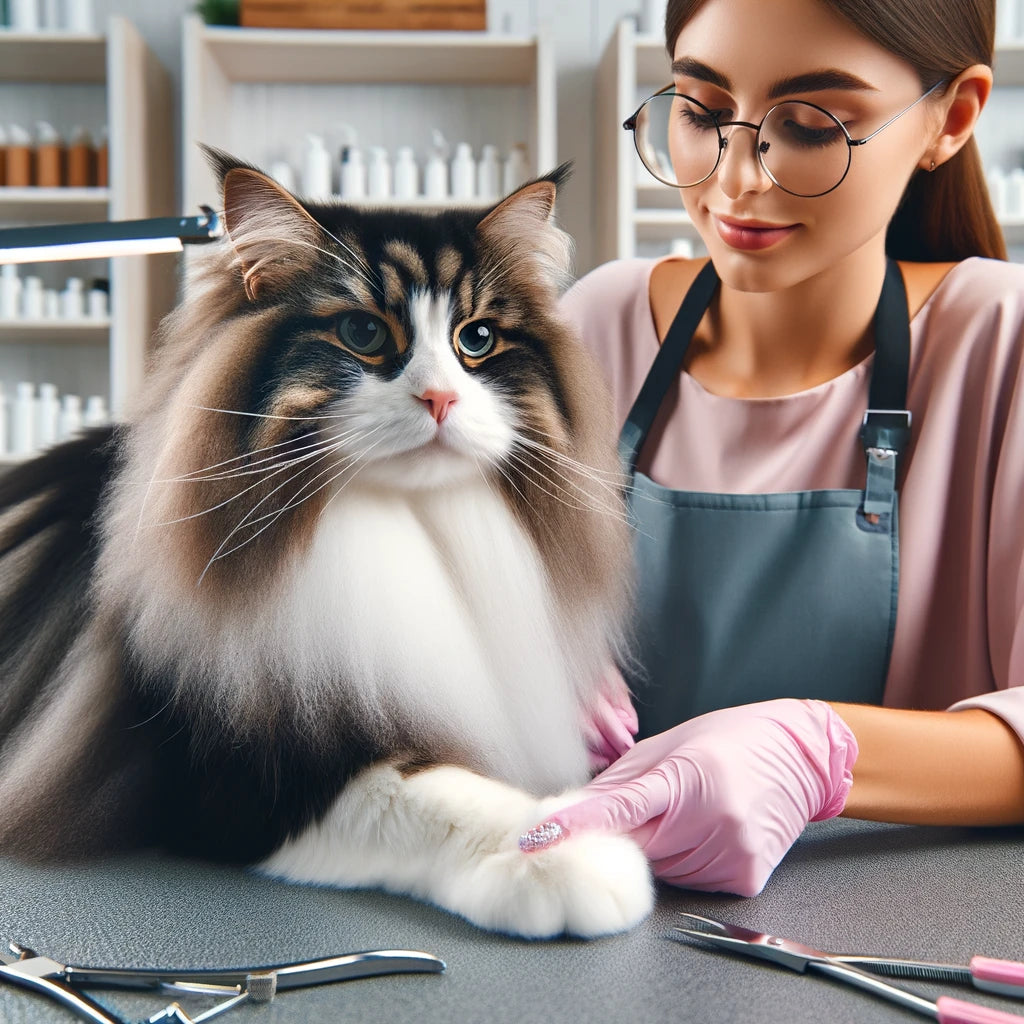Grooming a long-haired cat is an essential part of pet care that goes beyond keeping your cat looking good. It's about maintaining their health, ensuring comfort, and strengthening the bond between you and your pet. Long-haired cats require more attention in their grooming routine due to their luxurious fur, which is prone to matting and tangling. This comprehensive guide will take you through every step of grooming a long-haired cat, from brushing to bathing, and will answer frequently asked questions to help you master the grooming process.
Understanding the Needs of Long-Haired Cats

Long-haired cats, such as Persians, Maine Coons, and Ragdolls, have beautiful, thick coats that require regular maintenance. Without proper care, their fur can become matted, which can lead to skin infections and discomfort. Regular grooming not only keeps their coat in good condition but also helps you monitor the health of their skin and reduce the amount of hair they ingest during self-grooming, which can decrease the occurrence of hairballs.
Essential Grooming Tools
Before you start grooming your long-haired cat, it’s important to gather the right tools that will make the grooming session easier and more effective:
- Slicker Brush: Helps remove tangles and loose fur.
- Wide-toothed Comb: Used for detangling.
- Fine-toothed Comb: Helps finish the coat and remove any remaining small knots.
- Dematting Tool: Useful for cutting through mats.
- Grooming Scissors: For trimming and cutting out severe mats.
- Cat Shampoo: Specially formulated for felines.
- Conditioner: Helps keep the fur soft and tangle-free.
- Absorbent Towels: For drying your cat after a bath.
- Hair Dryer: Optional, used on a cool setting and only if your cat tolerates it.
Regular Brushing

Brushing is the most crucial aspect of grooming a long-haired cat. It should be done daily to prevent the formation of mats and to keep the coat smooth and clean.
Steps for Effective Brushing:
- Start Young: Get your cat accustomed to brushing from an early age.
- Be Gentle: Always brush gently to avoid pulling the skin.
- Follow the Hair Growth: Brush in the direction of the hair growth to avoid discomfort.
- Use the Right Tools: Begin with a wide-toothed comb to tackle any tangles, then use a slicker brush to remove loose fur.
- Pay Attention to Sensitive Areas: Be extra gentle around the belly, legs, and tail.
Bathing Your Long-Haired Cat

Bathing a long-haired cat can be challenging, but it’s necessary to keep their coat clean and free of oils and dirt that can contribute to tangles.
How to Bathe Your Cat:
- Preparation: Ensure all mats are removed before bathing. Mats can worsen when wet.
- Water Temperature: Use lukewarm water. Too hot or too cold can be uncomfortable for your cat.
- Apply Shampoo: Use a cat-specific shampoo and gently massage it into the coat. Avoid the face, ears, and eyes.
- Rinse Thoroughly: Any residue can cause irritation or increase the risk of mats.
- Apply Conditioner: This step is optional but recommended to help keep the fur manageable.
- Drying: Towel dry gently, followed by a hairdryer on a cool setting if your cat isn't stressed by it.
Trimming and Mat Removal

Sometimes, despite regular grooming, long-haired cats develop mats that are too tight to brush out.
Steps for Mat Removal:
- Identify Mats: Feel for clumps of tangled hair, usually found under the collar, behind the ears, and on the lower back.
- Use a Dematting Tool: This tool can safely cut through the mat without hurting the skin.
- Trimming: If mats cannot be safely removed, trimming them out with grooming scissors may be necessary. Be very careful to avoid cutting the skin.
Nail Trimming
Keeping your cat’s nails trimmed is also an important part of grooming.
How to Trim Cat Nails:
- Hold Firmly but Gently: Hold your cat's paw and press it softly to extend the nail.
- Clip the Tip: Avoid the pink quick, which contains blood vessels and nerves. Just clip the white tip.
Ear Cleaning
Ears should be checked weekly for dirt, wax, or signs of infection (bad odor, excessive scratching).
Cleaning Cat Ears:
- Use a Vet-Recommended Cleaner: Apply a few drops in each ear.
- Massage Gently: Massage the base of the ear to help the cleaner work its way in.
- Wipe Out: Use a soft cotton ball to gently wipe out the ear.
Dental Care
Good oral hygiene is crucial for overall health.
Brushing Your Cat's Teeth:
- Cat-Specific Toothpaste: Never use human toothpaste.
- Soft Brush or Finger Brush: Gently brush the teeth and gums.
Frequently Asked Questions
Q: How often should I bathe my long-haired cat? A: Every 4-6 weeks is typically sufficient, but this can vary based on your cat’s lifestyle and skin health.
Q: What should I do if my cat hates being groomed? A: Try to make grooming a positive experience with lots of praise and treats. Also, keep sessions short and gradually increase their length as your cat becomes more comfortable.
Q: Can I use human hair products on my cat? A: No, always use products formulated for cats as human products can be harmful to them.
Q: How can I prevent my cat from getting mats? A: Regular brushing is the best way to prevent mats from forming. Ensure you’re brushing all layers of the coat, not just the top.
Q: What if my cat's skin gets irritated after grooming? A: Consult your veterinarian as your cat might have sensitive skin that requires special products or less frequent grooming.
By following these detailed steps and incorporating regular grooming into your routine, you can help ensure that your long-haired cat remains healthy, happy, and beautiful. Grooming is not just a necessity; it's a way to show love and care for your furry companion.

